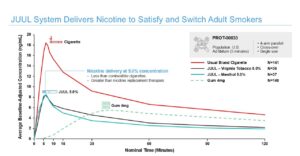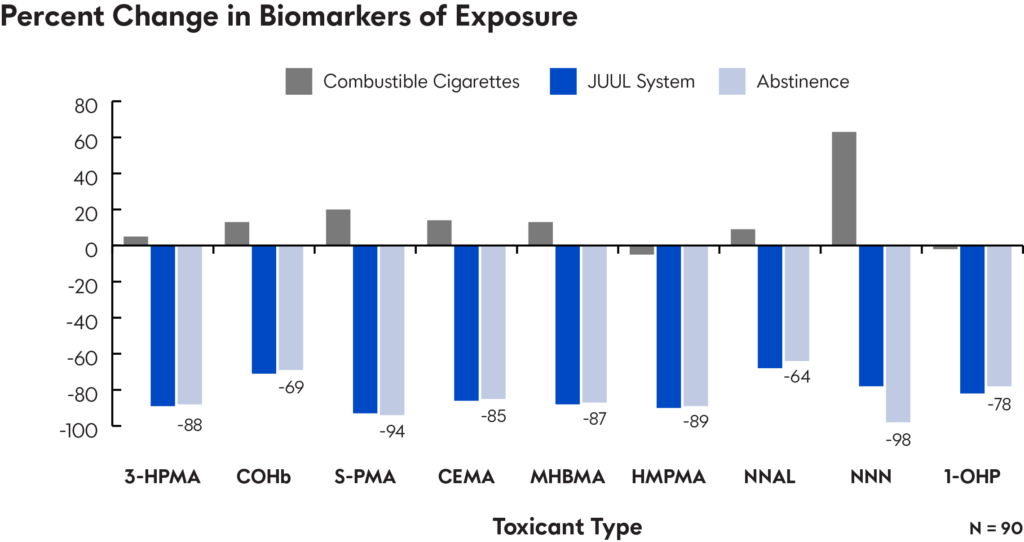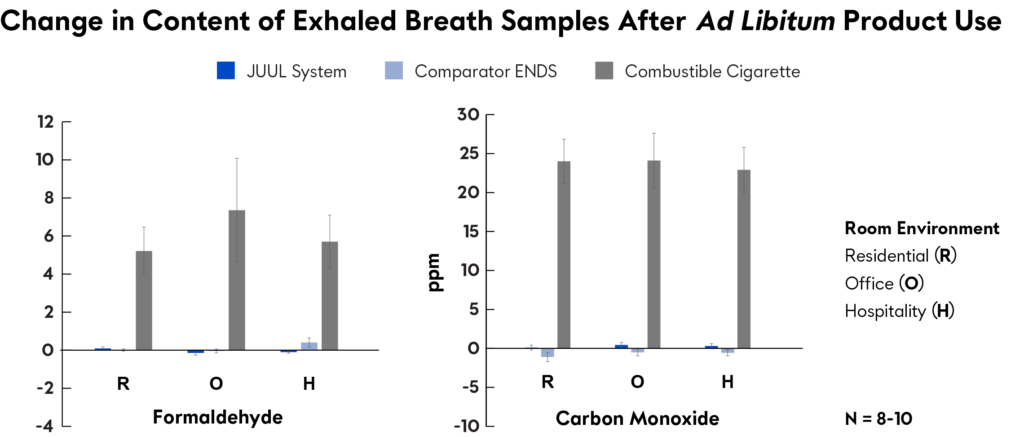Clinical Studies
Our clinical studies examine the impact of the JUUL System on human health, including the rate and level of nicotine absorption in the body, product use and inhalation patterns, potential secondhand aerosol exposure in real world settings, and reductions in exposure to chemicals tied to harm.
These studies assess the physiological impact on adult smokers and the environmental impact on others by examining the level of exposure to a specific substance and potential harm over time with the JUUL System compared to combustible cigarettes.
Pharmacokinetic studies
Assessing the rate and level of nicotine absorption in the body as well as subjective effects of JUUL System use

Providing a nicotine effect and experience comparable to combustible cigarettes is critical to facilitate an adult smoker’s transition from combustible cigarette use. Our clinical studies demonstrate a nicotine absorption curve for the JUUL System that is comparable to, but generally lower than, a combustible cigarette.
Pharmacokinetic studies have shown that, on average, use of the JUUL System with a 5.0% nicotine concentration results in both a lower maximum nicotine concentration in the blood and lower total nicotine concentration in the blood over time compared to combustible cigarettes.
Biomarkers of exposure studies
Measuring exposure to chemicals tied to potential harm in the body
In a clinical study, we examined changes, relative to baseline, in urine and blood biomarkers of exposure (BOEs) in 90 adult smokers. The selected BOEs were linked to harmful and potentially harmful constituents (HPHCs), such as carcinogens and other toxicants, found in the smoke of combustible cigarettes. Study subjects were randomized into six groups and, over five days, either used JUUL System products, abstained from tobacco and nicotine use, or continued use of their usual brand of combustible cigarettes.
The study found that all eight non-nicotine urine BOEs were reduced by an average of 85.0% in the JUUL System group compared to an average reduction of 85.3% in the abstinence group. This represented a 99.6% average relative reduction in BOEs for the JUUL System product group relative to the group that continued use of their usual brand of combustible cigarettes.
Environmental studies
Evaluating exhaled breath and emissions profiles in real-world settings
Results from a clinical study of 30 adult smokers found that formaldehyde and carbon monoxide in exhaled breath were reduced approximately 99% in the exhaled breath of JUUL System users compared to those who smoked combustible cigarettes.


